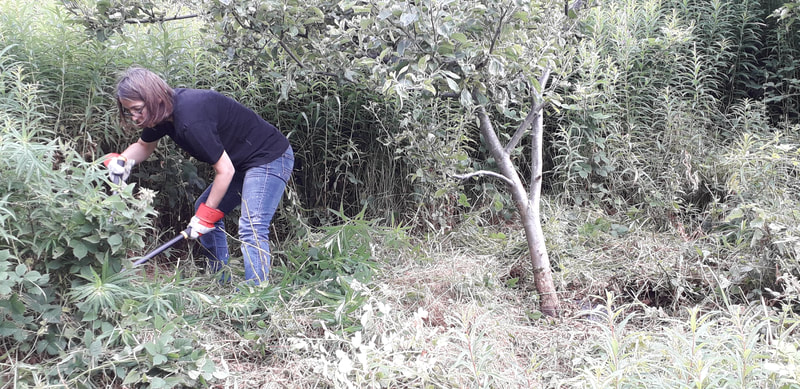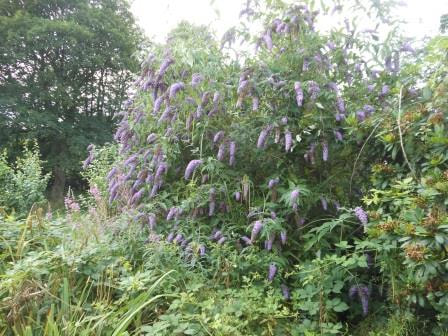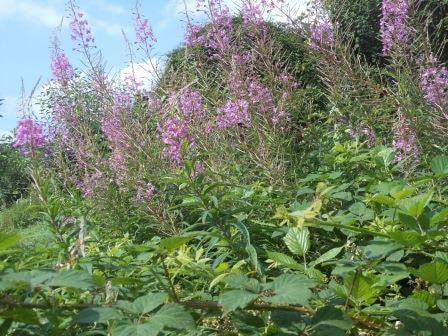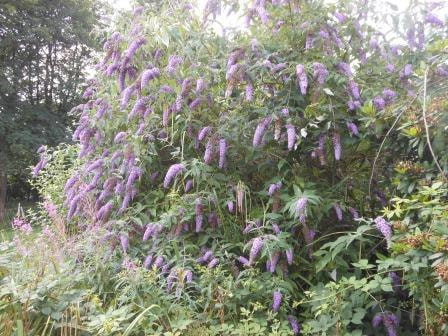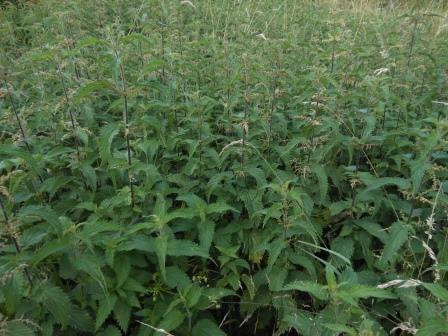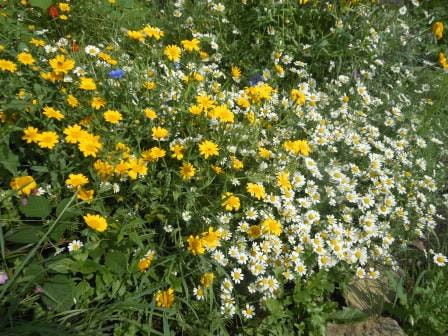Denis’ Field is a rich and varied habitat. It contains a wide range of plants, especially large mature trees and supports a large number of animals especially birds.
The central playing field grass is cut in the summer by the council. Other plant management is kept to a minimum to encourage the wildlife. Some weed clearance is carried out in the community orchard area by volunteers. Most of Denis’ Field is left to grow wild – which is wonderful both for the wildlife to flourish in and for children to explore in!
The central playing field grass is cut in the summer by the council. Other plant management is kept to a minimum to encourage the wildlife. Some weed clearance is carried out in the community orchard area by volunteers. Most of Denis’ Field is left to grow wild – which is wonderful both for the wildlife to flourish in and for children to explore in!
The area known as Denis’ Field consists of 5 main parts –
- Playing Field
- Raised bed area for vegetable growing, run by the Denis' Field Friends and Growers, a local community gardening group
- Community Orchard on the north side – 44 fruit trees planted by Incredible Edible in 2009 – mainly Apple, plus some Plum and now some new Pear trees too, with some Allotment Vegetable areas and some valuable ‘scrub’ areas with wild flower areas plus Blackberry, Buddleia, Hawthorn, Ash, Elder, Beech, Holly, Sycamore, Elder, Willow and Rosebay Willowherb and Nettles.
- Mature Trees – on the west side by the play equipment – mainly large mature trees - Horse Chestnuts plus Ash, Lime and Sycamore.
- ‘Green Corridor’ of mixed mature trees on the south side by the railway line. This area also contains some ‘scrub’/bramble/wildflower areas and there is a path which wanders through the trees. The trees species here are varied – Oak, Ash, Sycamore, Horse Chestnut, Lime, Silver Birch. Bird Cherry, Holly, Elder, Rowan, Hawthorn and Hornbeam – generally all large and mature
Because of the varied nature of the place numerous birds are attached to the area. The following birds are seen on the field in the trees and visiting the scrub areas:
Wren, Blue Tit, Great Tit, Long Tailed Tit, Coal Tit, Dunnock, Robin, Blackbird, Song Thrush, Mistle Thrush, Carrion Crow, Magpie, Jackdaw, Wood Pigeon, Collared Dove, Chaffinch, Goldfinch, Bullfinch (an Amber Alert species declining in numbers in the UK), Greenfinch, Jay, Green Woodpecker, Greater Spotted Woodpecker, Sparrow-hawk, Pied Wagtail, Grey Wagtail, Chiff Chaff, Willow Warbler, Pheasant.
Tawny Owls can be heard regularly in the large trees by the play area and can be seen at dusk. Goldcrests have been seen occasionally in the hedging and Snipe have visited the playing field in the winter.
Denis’ Field also attracts mammals. Roe Deer are now seen on the field regularly. Foxes have been seen. There are some signs of Badger activity (unconfirmed). Moles live in the field. At night in the summer Pipistrelle Bats track up and down along the tree lines. It is thought that they roost in the mature trees by the play park area. Rabbits and occasionally hedgehogs are seen.
The varied wild flower and scrub areas attract a lot of butterflies in the summer. Small Tortoiseshell, Painted Lady, Peacock, Red Admiral, Large White, Small White, Greenveined White, Meadow Brown butterflies are all seen regularly. Small Heath and Common Blue butterflies are occasionally seen. Yellow Underwing Moths are common on Denis’ Field. Bees, both Honey Bees and a variety of Bumble Bees, are found on Denis’ Field collecting nectar and pollinating the numerous flowers on the site.
Wren, Blue Tit, Great Tit, Long Tailed Tit, Coal Tit, Dunnock, Robin, Blackbird, Song Thrush, Mistle Thrush, Carrion Crow, Magpie, Jackdaw, Wood Pigeon, Collared Dove, Chaffinch, Goldfinch, Bullfinch (an Amber Alert species declining in numbers in the UK), Greenfinch, Jay, Green Woodpecker, Greater Spotted Woodpecker, Sparrow-hawk, Pied Wagtail, Grey Wagtail, Chiff Chaff, Willow Warbler, Pheasant.
Tawny Owls can be heard regularly in the large trees by the play area and can be seen at dusk. Goldcrests have been seen occasionally in the hedging and Snipe have visited the playing field in the winter.
Denis’ Field also attracts mammals. Roe Deer are now seen on the field regularly. Foxes have been seen. There are some signs of Badger activity (unconfirmed). Moles live in the field. At night in the summer Pipistrelle Bats track up and down along the tree lines. It is thought that they roost in the mature trees by the play park area. Rabbits and occasionally hedgehogs are seen.
The varied wild flower and scrub areas attract a lot of butterflies in the summer. Small Tortoiseshell, Painted Lady, Peacock, Red Admiral, Large White, Small White, Greenveined White, Meadow Brown butterflies are all seen regularly. Small Heath and Common Blue butterflies are occasionally seen. Yellow Underwing Moths are common on Denis’ Field. Bees, both Honey Bees and a variety of Bumble Bees, are found on Denis’ Field collecting nectar and pollinating the numerous flowers on the site.


